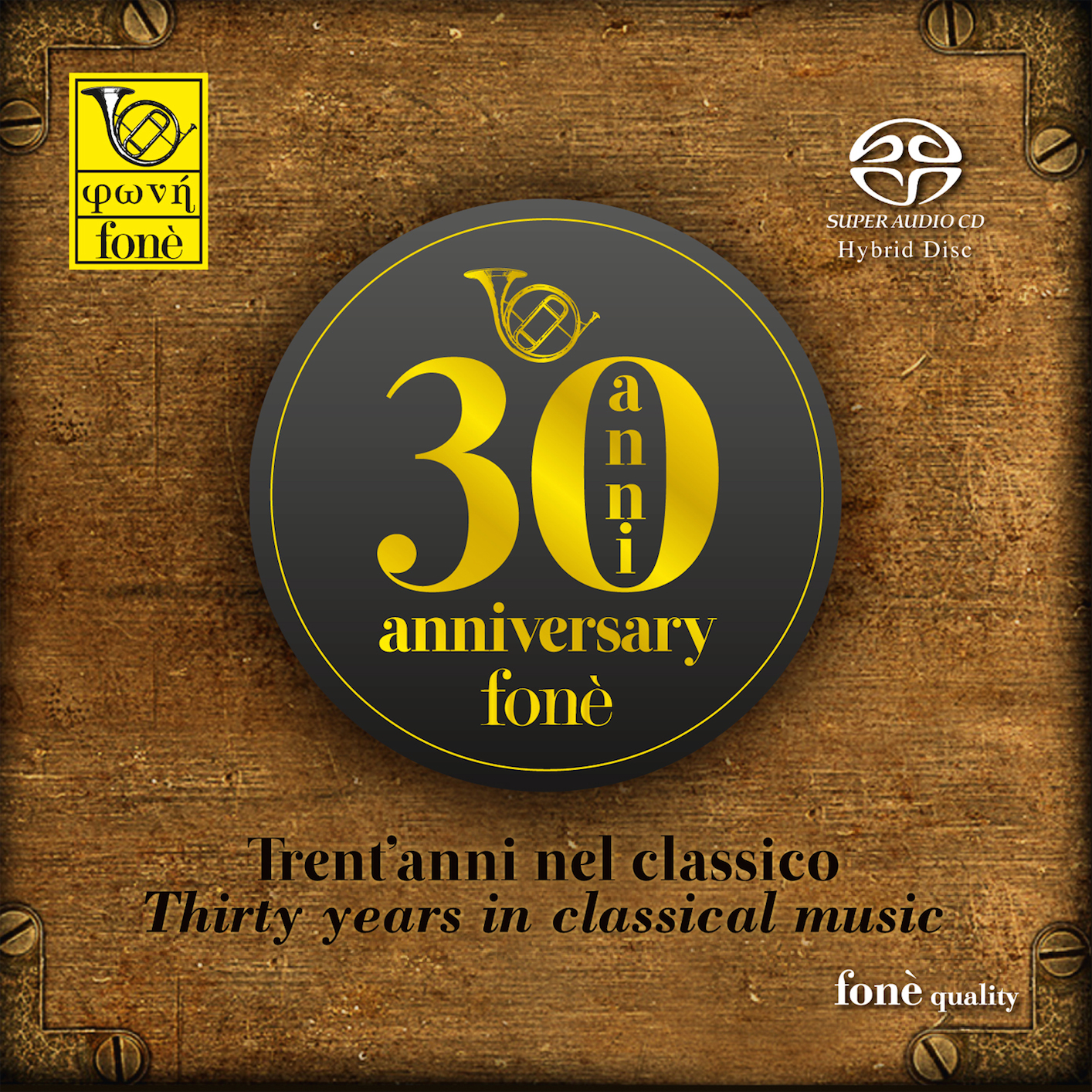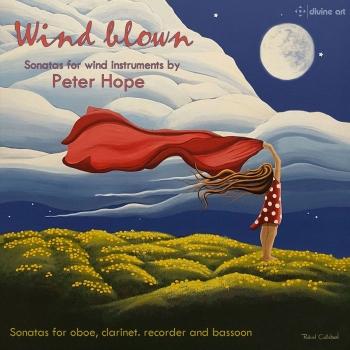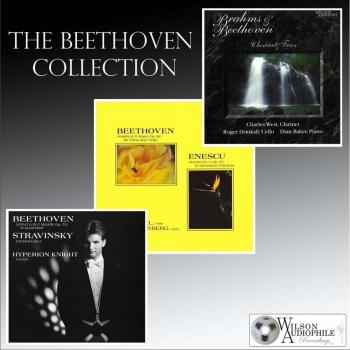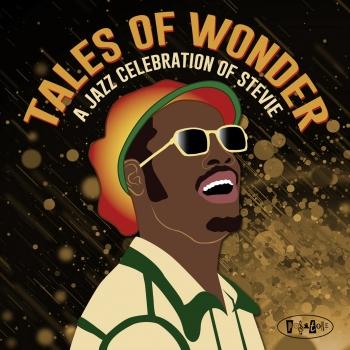
fonè Trent’anni nel classico - Thirty Years in Classical Music Various Artists
Album info
Album-Release:
2013
HRA-Release:
16.12.2014
Album including Album cover Booklet (PDF)
- Nino Rota (1911-1979)
- 1 Castel del Monte, Ballata per corno e pianoforte 11:05
- Marco Enrico Bossi (1861-1925)
- 2 Intermezzi Goldoniani op. 127, Gagliarda 04:04
- Henryk Wieniawsky (1835-1880)
- 3 Polonaise n.2 in re maggiore 05:04
- Alexandre Tansman (1897-1986)
- 4 Sonatina per fagotto e pianoforte, Largo cantabile 02:54
- Giuseppe Martucci (1856-1909)
- 5 Scherzo op.53 in re bemolle maggiore 05:01
- Francis Poulenc (1899-1963)
- 6 Trio per pianoforte, oboe e fagotto 03:10
- Wilhelm Furtwangler (1886-1954)
- 7 Sonata n.8 per pianoforte in re minore, Andante 06:27
- Ernesto Cavallini (1807-1874)
- 8 Adagio e Tarantella per clarinetto e pianoforte 05:34
- Giuseppe Martucci (1856-1909)
- 9 Sonata in fa diesis minore per violoncello e pianoforte, op.52 03:42
- Giorgio Federico Ghedini (1892-1965)
- 10 Quintetto a fiati, Allegro moderato 05:28
- Fritz Kreisler (1875-1962)
- 11 Recitativo e scherzo, capriccio op.6 04:32
- Luigi Orselli (1879)
- 12 Reminiscenze su La Traviata di Giuseppe Verdi 07:14
Info for fonè Trent’anni nel classico - Thirty Years in Classical Music
My dream has always been to record the sound of silence, and in silence to find the breath of life. To record the feelings and the emotions of people, as nearly as I can. The problem is not how to capture the space or the depth or the source of the sound, all this of course is fine and provides emotions, but is not in itself moving. To portray the smell of the concert hall, or the concentration of both performers and listeners, that is what is moving.
If we believe that recording means portraying truth by following objective, absolute criteria, then we have completely missed the point. When I record, I follow all my senses, which means not only what I hear, but more importantly the feelings that come into the soul and to the heart. For me, placing the microphones is something of a sacred ritual, almost a mystic art. I have to find, and I know that it exist and is waiting to be found, that pocket-handkerchief sized space of air where the whole atmosphere can be felt.
I measure the dimension with eyes and ears, I evaluate the materials, and, as an instrument-maker would, I ‘tune’ some gigantic structure like a church, a theatre or a music salon. And if the public are present, so much the better! Like an extraordinary acoustic trap, the bodies and the faces of hundreds of people make the sound more linear. If I could, I would record the bodies! And after, two, three, four microphones higher, lower, to the right, no, to the left... each time the conditions change and everything has to be discovered again, even the 'emotion centre'.
The microphones are eventually exactly there where they should be; I must be aware of everything, the beautiful women, the musicians, their state of mind, and remind myself of the flavour of the occasion... and then, draw everything together at that 'centre'.
Reality on its own does not exist, it only exists in our own feelings.
In truth, I record my own feelings, fonè is my gift to music and to all music lovers.
Track list:
1. Nino Rota - Castel del Monte, Ballata per corno e piano
Simone Baroncini, corno / Umberto Fanni, piano
2. Marco Enrico Bossi - Intermezzi Goldoniani op. 127, Gagliarda
I Musici
3. Henryk Wieniawsky - Polonaise n.2 in re maggiore
Salvatore Accardo, violino / Laura Manzini, piano
4. Alexandre Tansman - Sonatina per fagotto e piano, Largo cantabile
Stefano Canuti, fagotto / Umberto Fanni, piano
5. Giuseppe Martucci - Scherzo op.53 in re bemolle maggiore
Carlo Alessandro Lapegna, piano
6. Francis Poulenc - Trio per piano, oboe e fagotto
Umberto Fanni, piano / Giovanni De Angeli oboe / Stefano Canuti, fagotto
7. Wilhelm Furtwangler - Sonata n.8 per piano in re minore, Andante
Caroline Doerge, piano
8. Ernesto Cavallini - Adagio e Tarantella per clarinetto e piano
Corrado Giuffredi, clarinetto / Umberto Fanni, piano
9. Giuseppe Martucci - Sonata in fa diesis minore per cello e piano, op.52
Andrea Nannoni, violoncello / Giovanna Prestia, piano
10. Giorgio Federico Ghedini - Quintetto a fiati, Allegro moderato
Marzio Conti, flauto / Paolo Pollastri, oboe / Giovanni Riccucci, clarinetto
Paolo Carlini, fagotto / Paolo Faggi, corno
11. Fritz Kreisler - Recitativo e scherzo, capriccio op.6
Marco Fornaciari, violino
12. Luigi Orselli - Reminiscenze su “La Traviata” di Giuseppe Verdi
Stefano Canuti, fagotto / S. Zanchetta, C. Bacchi, violini / C. Di Vacri, viola
T. Campagnaro, violoncello / U. Fioravanti, contrabbasso
A compilation dedicated to funk and pre – zouk period, which has never been documented before. It is compilated by specialists of the genre: Julien Achard (Digger's Digest) and Nicolas SKLIRIS (ex-Superfly Records).
After the success of Kouté Jazz, Heavenly Sweetness comes back with a dancefloor but not jazz compilation, enough to move your feet at through the whole summer ! 13 disco, boogie and Zouk tracks recorded in the 80’s in the West Indies.
The advantage of this selection is precisely that it reveals a broader spectrum than the zouk music style that are badly defined. Most of the tracks, were not much broadcasted even if interpreted by some big names in Caribbean music (Pierre-Edouard Decimus / Patrick St. Eloi / Eddy La Viny). They were too fast classified as Zouk. These Tracks reveal this will of singularity, this merger between traditional and other rhythms genres (funk, disco, afro-beat, Latin Brazilian ...), with the addition of new instruments such as synthesizers and drums machine in the creative process.
In many zouk’s albums, this period often included one or even several, tracks that were qualified as "proto-zouk" and "funky-zouk" or the "boogie-zouk" to emphasize the fusion of genres . But these tracks have remained unknown to the general public because only the "hits" were played on the radio, dance floors (the famous "tan" or “zouk”), clubs and bus.
Booklet for fonè Trent’anni nel classico - Thirty Years in Classical Music




































